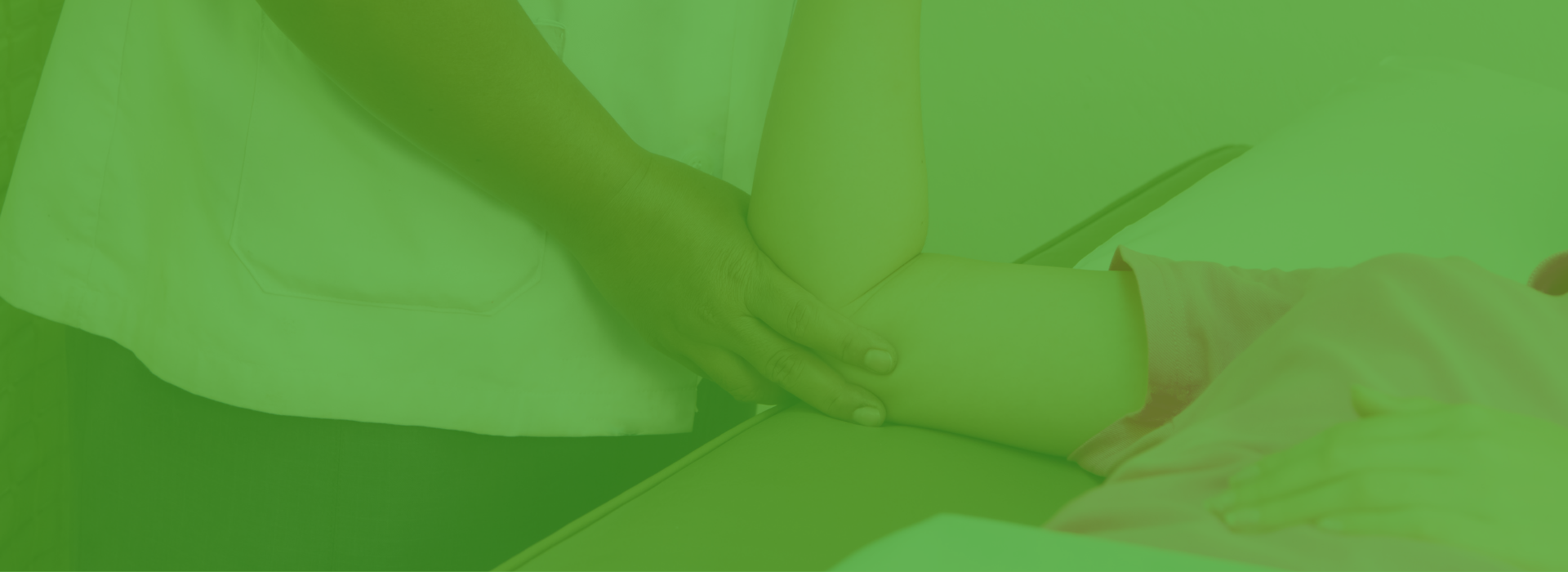“Education is important but big biceps is importanter”…
At Pivotal Motion Physiotherapy, we definitely disagree. The biceps along with other parts of the arm are complex, and injury to any of these areas: whether it is bones, joints or muscles can have a huge impact on our daily living. When such an injury occurs, undergoing arm physiotherapy can help restore motion strength and flexibility.
A historical symbol of strength, the arms have a variety of uses that allow us to not only perform day-to-day activities, but partake in pursuits such as weightlifting, writing and painting. Connecting the wrist and hand to the trunk of the body, the arm contains three main segments; the bicep, the tricep and the forearm. Each have their own function, which ultimately assist in complete arm movement, but these compartments can also be left sore or overworked due to our workloads and lifestyle.
Primary Function of the Arm
The main function of the arm is to allow for movement of the wrist and hand. The muscles of the upper arm, the biceps and triceps, control the movement and positioning of the elbow joint, with the muscles of the forearm controlling the wrist and hand. Due to this joint control, both lifting capacity and grip strength come from the arm muscles, making them essential for many activities.

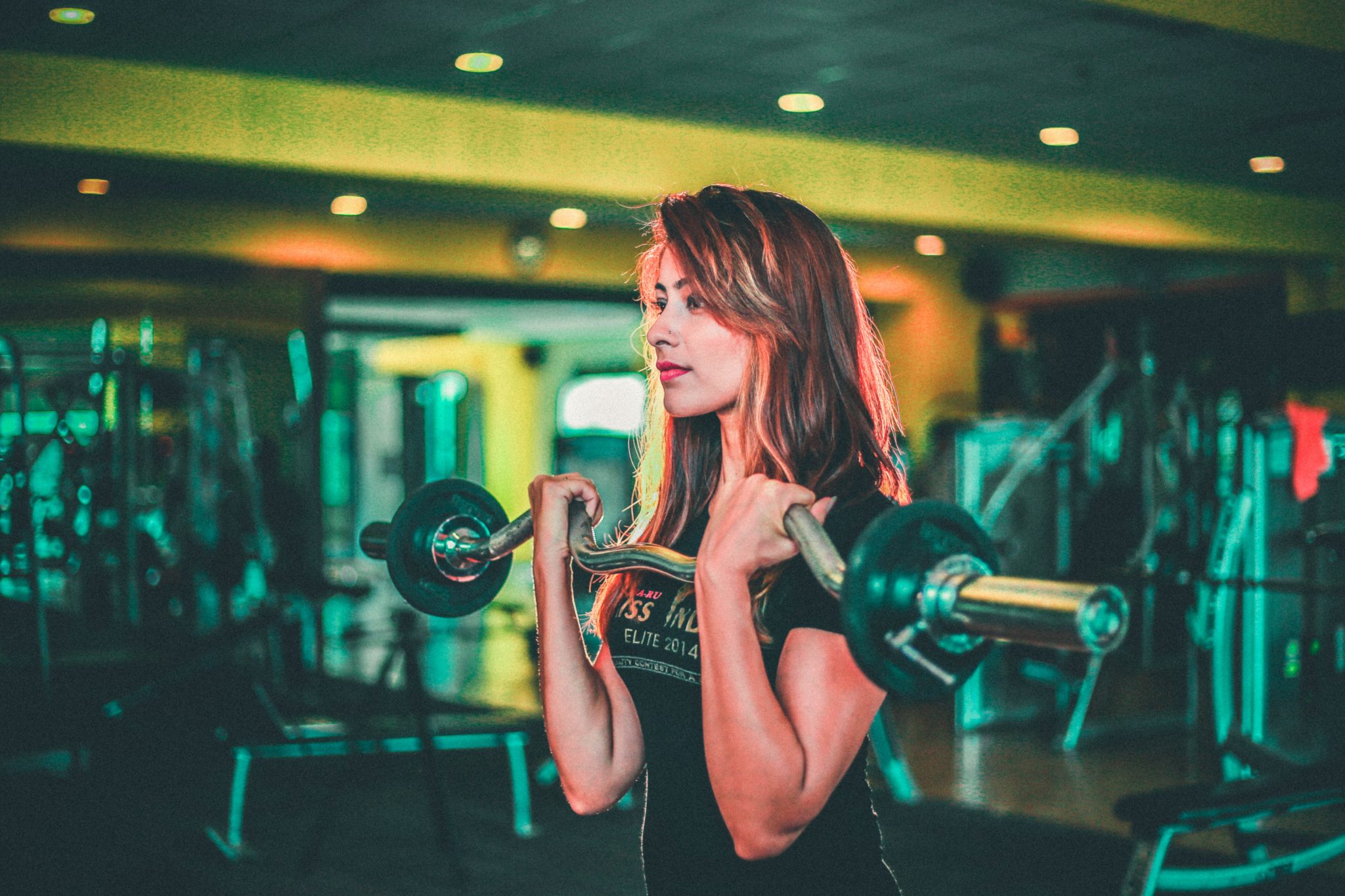
Anatomy, Injuries & Symptoms of Arm Injuries
With the number of jobs and uses placed on it, it is quite common for injuries to occur to the arm. Between the top of our arms to the tips of our fingers there are 30 bones, the humerus in the upper arm, ulna and radius in the forearm, carpal bones in the wrist and the metacarpals and phalanges which make up the hand and fingers. Joints allow for movement between the bones and are stabilised by ligaments and joint capsules. A range of muscles initiate the movements of the arm, large muscles help to flex and extend, pronate and supinate, whilst smaller, more sensitive muscles allow fine motor control in activities such as writing. Physio for arm pain can help restore movement to injuries sustained in these areas.
Arm Muscle Tears and Strains
As the arm is used so frequently and often can bear a great deal of weight,
muscle strains, tears or tendon ruptures can often occur. The most common of these injuries will be to the biceps. Varying levels of injury can be classified into three grades of tear. A Grade I injury will be an overstretching of the muscle, possibly causing microtears. Grade II means a slight tear of the muscle whilst a Grade III is where a complete rupture of the tendon occurs.
The biceps brachii is named so to describe its two different muscle bellies, or heads. Each muscle belly has a different site of origin, the long head of the biceps originating from the supraglenoid tubercle and the short head from the coracoid process of the scapula. The two heads then join at mid-upper arm to become one larger structure and attach distally onto the upper end of the radius. Rupture at the proximal (top) end of the bicep is the most common and usually happens to the tendon of the long head of the biceps muscle.
Tears usually occur in the older population due to chronic inflammation and repeated strain or microtrauma to the tendon. This can begin as tendinitis which is left untreated or can occur due to repeated impingement. In younger populations, tendon rupture will often occur due to explosive force in a supinated (palm up) position in a resisted flexion (bending) movement.
Symptoms and treatment of Bicep strains or tear
The first symptom of a tear or strain to the muscle will be pain. Though some pain is expected after a workout or heavy activity load with delayed onset muscle soreness this should not last more than a few days, nor be debilitating. Acute pain and swelling or bruising will also be indicative of a strain or tear and it may increase when trying to contract or flex the muscle. Complete rupture of the tendons can cause bulges to occur as the ends of the tendons separate and recoil. Some tears may be asymptomatic, not acutely painful; however, they may present as muscular ache and functional difficulties, especially when attempting overhead movements.
Though biceps tears are the most common and holds a great deal of attention, strains, sprains and tears can occur in any muscles though will all present with similar symptoms. It will be important to attend an appointment with a physio to gain an accurate diagnosis and start an arm physiotherapy treatment regimen to remedy the issue.
Physiotherapy will help you to make a full recovery from a biceps injury as our team will help guide your treatment through manual therapy to make sure that the tendon heals properly and a reloading program to ensure a swift return to work or sport.
Tendinitis
Tendinitis is an inflammation or the irritation of a tendon, the structure which attaches our muscles to the bone. When our muscles contract, they draw in the tendons, which pulls on the bone at its attachment site and thereby causes movement.
Tendinitis will cause pain around joints and is most often caused by sport injuries or repetitive strain movements. Though possible in all the bodies tendons, it is most prevalent around joints with large attachment sites; such as the elbow, wrist, knee and shoulder. If severe enough, tendinitis can lead to a degradation of the structural integrity of the tendon, possibly leading to tendon rupture. Arm or elbow pain rehab can potentially help with these types of injuries.
Common tendinitis injuries that affect our arms include:
De Quervain’s Syndrome
De Quervain’s Syndrome, an inflammation of the tendons of the thumb which run along the wrist. De Quervain’s Syndrome is usually caused by repetitive back-and-forth, sideways movements of the wrist while gripping with the thumb, movements such as hammering or pruning. The repetitive strain will cause a thickening of the tendon, which can lead to inflammation of the area and irritation around the side of the wrist.
Symptoms that you have developed De Quervain’s include pain and swelling at the thumb (radial) side of the wrist, a feeling that your thumb catches or snaps and difficulty in gripping objects with the affected hand.
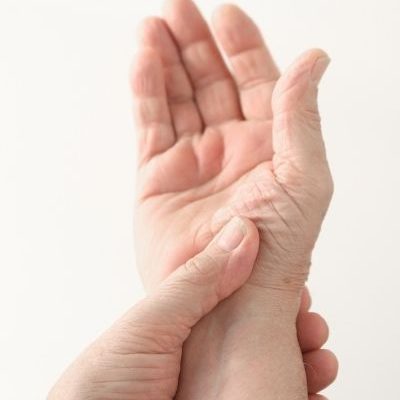

Tennis Elbow
Tennis Elbow is a tendinitis injury affecting the muscles which attach on the outside (lateral side) of the elbow. These muscles work to extend the wrist and fingers; however, injury will often occur at the site where they attach proximally, around the elbow.
Tennis Elbow, as it is named, generally occurs due to activities like a tennis backhand. Injury can be caused by poor technique, and movements where the wrist is in resisted extension and gripping, for example cutting food (meat especially), long periods of typing, painting or carpentry.
Pain will originate from what is called the lateral epicondyle of the humerus, a small, bony lump on the outside of the elbow, but can transfer down through the forearm and wrist. There can be increases in pain when trying to grip objects, such as a coffee cup or during a handshake, or when using tools such as a screwdriver. Though some swelling may be present if the injury is severe enough, tennis elbow is believed to usually occur due to a degradation of the muscle tissue or tendon, rather than inflammation.
Golfers Elbow
Golfers Elbow is quite similar to Tennis Elbow, however, it affects the muscles which attach to the inside of the elbow. The muscles are responsible for flexing the wrist and gripping fingers, therefore injury often occurs due to repetitive strain when gripping, rotating the arm or flexion of the wrist or fingers.
The injury will present itself at the proximal attachment of the muscles, originating from the bony lump on the inside of the elbow, the medial epicondyle.
Pain will originate at the medial epicondyle and refer down into the forearm and wrist. This pain may increase when trying to grip and object or flex your fingers or wrist, it may also increase when you try to stretch the muscles.
Other symptoms may include inflammation or swelling around the area and a locking and grinding feeling/sound when you use the muscle. Inflammation may not be present with the injury as often it can be a degradation of the tendon or muscle which will cause Golfer’s Elbow.

Fractures (Broken Bones)
With 30 bones making up what is generally defined as the arm, wrist and hand there are a vast array of fractures which can occur to this area. Fractures to the forearm are the most common break within the population, with the most of these occur to the distal (hand end) of the radius.
The forearm is made up of two bones: the radius, the bone on the thumb side of the forearm, and the ulna, the bone on little finger side of the forearm. As stated above, the most common arm fracture is in fact a ‘broken wrist’. The break occurs a short distance from the end of the radius and, depending on the mechanism of injury, may even affect the joint as well. Injury will often occur due to a fall onto an outstretched hand and is very common in older individuals as risk of falls increase and bone integrity decreases with osteoporosis.
Though ‘broken wrists’ are common there are a range of other fractures that can affect the arm. These include a break to the middle third of the ulna or radius, fractures of the carpal (wrist) bones or even broken fingers. The most common mechanism for injury is direct trauma to the bone, such as in a motor vehicle accident or collisions in contact sports.
Symptoms of Fractures
Most fractures will present with similar symptoms; severe pain, swelling, bruising and tenderness over the affected area. Movement of the joints, elbow or wrist will generally increase pain and the break may cause deformation of the arm.
If the injury is bad enough, an open or compound fracture may occur. With this form of fracture it is especially important to seek immediate medical attention to decrease risk of infection. If someone is believed to have broken a bone it is always integral that you seek urgent medical attention, so that the healing process can be initiated, and medical professionals can ensure correct alignment and healing of the injury.
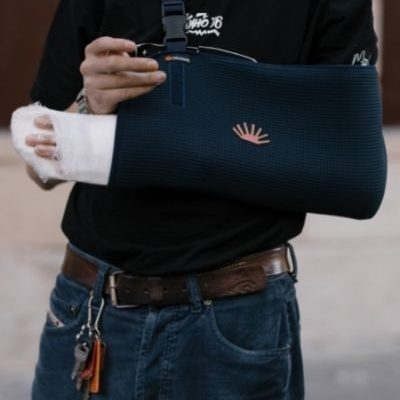
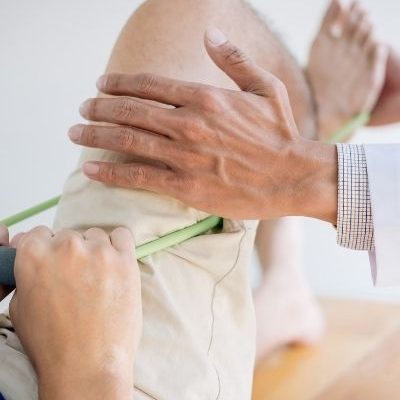
Treatment of Fractures
Arm physiotherapy will be important to treat the side effects of a broken bone, and to ensure correct healing of the injury. As a large amount of fractures are treated through immobilization, it is common to see muscle wastage (atrophy) and a decrease in strength and range of motion.
Physio for arm pain will therefore aid you to return movement to the joints and areas affected. There will also need to be a gradual reloading of the injury before you return to work or sport. Our physios can help prescribe an exercise program to help in this pursuit, but also to make sure that all parts of the body are healing together and properly, to minimise muscular imbalances or tightness.
Fractures of the upper arm (humerus bone) will often occur at the proximal end of the bone, affecting the shoulder. More information about these injuries can be found in our Shoulder Injuries page.
Dislocations and Subluxations
Dislocation
Dislocations occur when one aspect of a joint becomes displaced relative to the other. The most common dislocation which will occur in the arm is a dislocated elbow, however, these are still very irregular.
An elbow dislocation occurs when the ulna and radius are displaced relative to the humerus, becoming completely removed from what is considered the ‘joint’. The dislocation will generally occur from a fall onto an outstretched arm, the force is transferred up the arm and drives the two forearm bones away from the humerus. Injury can also occur in events such as a car accident, where people try to shield themselves from the impact. Elbow injury rehab can help rebuild strength and aid in recuperation.
A dislocation will present as immediate and severe pain, deformation of the joint, swelling and a partial to complete inability to flex or extend the joint.
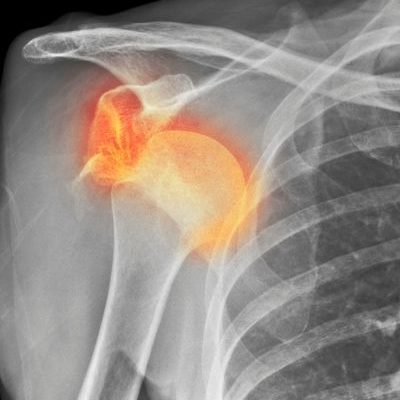
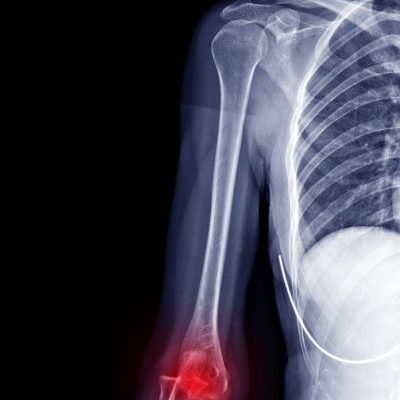
Subluxation
A subluxation of a joint is similar to a dislocation; however, the joint is only partially disassociated and can often return to its original position. Elbow subluxation are not common either, usually happening because of a motor vehicle accident.
They can be difficult to diagnose but will present with pain, some swelling, possibly limited range of motion and pain occurring as the joint is moved. If injured severely enough, there may be damage to the nerves and blood vessels surrounding the elbow, it is therefore important to present to a medical professional if a dislocation occurs.
Physiotherapy will assist in the correct treatment of a dislocation as we can diagnose and address any further structural issues which may arise. Our trained physiotherapists will also help in the proper healing and gradual reloading of the joint.
Ligament Injuries
The main ligament injuries which affect the arm occur at the elbow joint.
Ligament injuries often occur due to repetitive strain movements or traumatic injury, such as a fracture or dislocation of a joint. The two main injuries which will affect the elbow are strains to the medial or lateral collateral ligaments.
Injuries to the Lateral/Radial Collateral Ligament of the Arm
The radial collateral ligament (RCL) of the elbow attaches on the outside aspect of the joint and prevents varus (outward) forces from displacing the joint.
Injury to the RCL will usually occur due to trauma to the area, such as a fracture of the bones around the joint, or a dislocated elbow. These can happen when falling on an outstretched arm or in a motor vehicle accident. For rupture or significant strain to occur, there must be varus force placed on the joint greater than the RCL can withstand.
The injury will present with pain through the outer aspect of the elbow, inflammation and swelling, a loss of function and range of motion. As the injury is usually part of a greater dislocation or fracture, symptoms may be paired with those issues, and the injury can be diagnosed by medical imaging or manual therapy.
Injuries to the Medial/Ulnar Collateral Ligament of the Arm
Injury to the ulnar collateral ligament (UCL) of the elbow most often occurs due to repetitive strain and valgus (inwards) forces greater than the UCL can resist.
Ulnar collateral ligament strain is an injury which regularly plague’s throwing athletes such as javelin or baseball pitchers. Called Thrower’s Elbow or Little League Elbow, the repetitive throwing movement places strain onto the joint and the ligament, causing possible tears and if severe enough even rupture. Strain of the UCL is very common in young athletes with large throwing loads, such as a baseball pitcher. Hence it has been dubbed Little League Elbow due to its prevalence in the sport.
Symptoms of Throwers/Little League Elbow include sharp, acute pain when throwing, an aching or burning pain after a throwing session, possible inflammation and pain through the range of motion.
It is important to undergo elbow pain rehab if injuries to the elbow ligaments are suspected
As it is a movement centre and integral to a range of everyday activities, physio will help you to treat pain and regain function as soon as possible. Through a combination of manual therapy, gradual reloading, exercise prescription and education about management our physios will get you back playing sport or working as quickly as possible.
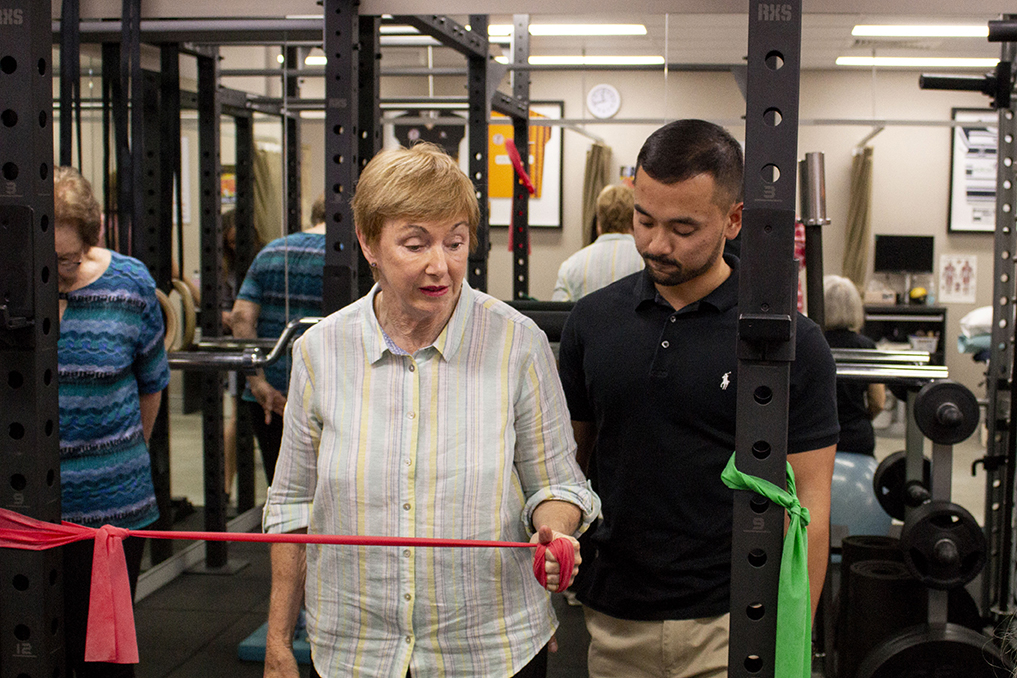
Benefits of Arm Physiotherapy
Physiotherapy is incredibly important for arm injuries to return function and reduce pain as it is integral to many activities of daily living. Though each injury will differ slightly, physio can aid in making sure that there is a correct process of healing and to work on a rehabilitation program that will allow you to execute full recovery goals in a timely manner to get you back to work or sport as soon as possible. The treatment of injuries may include:
- Manual therapy (soft tissue massage and trigger pointing).
- Joint mobilisation.
- Education about strapping, loading and management.
- Taping or brace support (especially important in recovery from ligament ruptures).
- Rehabilitation physiotherapy exercise programs for pre or post-habilitation.
- Ice or heat treatment.
- Work/sport modification advice and referral.
Injury Avoidance & Recovery
Recovering from an arm injury can often be frustrating due to its many uses. However, the arm can be isolated and so recovery can be quicker than other body parts.
Stretching of the muscles, and warming up both the shoulder and elbow joint before physical activity can reduce the likelihood of muscle strain or inflammation, in addition to lessening the threat of muscle tears. Gradually building up exercise load can help to minimise the risk of injury.
The use of strapping tape, as well as support bandages, can assist in strengthening the joints and muscles, counteracting point of contact injuries as well as tendonitis. Similarly, physiotherapy treatments can also reduce pain and injury likelihood, as arm pain can also be attributed to other areas of the body such as the neck or the shoulder.

If you are looking for injury physiotherapy to help with arm pain or other injuries, either acute or chronic, please call us now on 07 3352 5116 or book an appointment online. Our physiotherapy Brisbane team is here to help you!
Frequently Asked Questions
Can arm physiotherapy reduce my pain levels?
Undergoing physio for arm pain can help rebuild your arm’s functionality and through this process lower the amount of pain you feel. Talk to us about your specific situation to see how we can help. Call 07 3352 5116 or schedule an appointment online today.
What exercises help with arm pain?
This will depend on the extent and type of injury as well as the level of pain you are experiencing. For specific recommendations, talk with one of our friendly and experienced team members about your circumstances.
How long does it take an arm or elbow injury to heal?
While arm and elbow injury rehab can help the healing process there is no specific time frame on the recovery process. The range of time it takes to heal depends on factors such as the extent of the injury and adherence to the recommended procedures. Book an appointment today to talk with an experienced physiotherapist at Pivotal Motion Physiotherapy.

